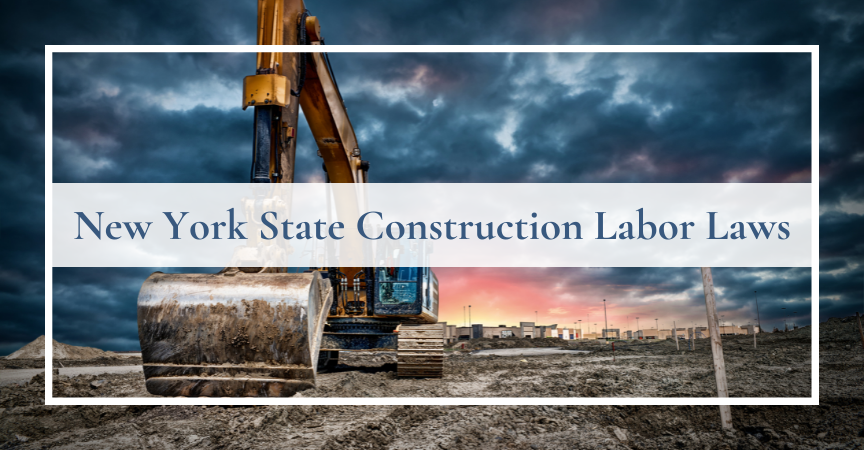New York State Construction Labor Laws
Many New York construction worker deaths or injuries could be prevented by following New York State Labor Laws 196, 200, 240, and 241. These laws make owners liable for accidents and specifically protect construction employees. All workers, regardless if they are non-union or working off the books, are protected by these laws.
New York state construction labor laws give all workers the right to sue a contractor or employer. Thus, allowing a worker the chance to get full compensation for injuries or death caused by a company’s negligence.
New York Labor Law 196
Local Labor Law 196 of 2017 required every construction and demolition worker to receive 30 hours of safety training by December 1, 2019. By September 1, 2020, an additional 10 hours of safety training was required. Law 196 also orders each job site to have a trained and designated Construction Superintendent, Site Safety Coordinator, or Site Safety Manager. All designated safety personnel must carry their Site Safety Training card (SST) while on the job. Please visit the Department’s site safety training page for the complete curriculum and list of requirements.
New York Labor Law 200
Law 200 states that an owner or contractor is at fault if they create a dangerous work environment. “All machinery, equipment, and devices in such places shall be so placed, operated, guarded, and lighted as to provide reasonable and adequate protection to all such persons.” This law also enforces building codes for all construction site health and sanitation facilities, elevators and escalators, exits, industrial radiation protection, and fire suppression systems.
New York Labor Law 240
Law 240 is also referred to as the Scaffold Safety Law. The law holds construction companies, contractors and sub-contractors responsible for providing and enforcing the proper use of safety equipment when using scaffolding. For example, all ladders, safety harnesses and hoists must be regularly inspected and properly maintained. Additionally, hardware and materials used to construct and secure scaffolding materials must be inspected, repaired and maintained daily. The Law 240/Scaffold Safety Law also gives construction workers and their families the right to sue an employer or the building site owner if they are killed or injured due to a scaffold construction accident.
New York Labor Law 241
Law 241 provides detailed information on how construction, demolition, and excavation worksites must be arranged and maintained to protect workers. Furthermore, Law 241 lists out daily safety actions on job sites, as well as the safety equipment that must be provided to all workers. Under New York Labor Law 241(6), a contractor or property owner is accountable in negligence for an accident that happened under their control or supervision.
Any violations of these laws that caused a wrongful death or injury can give a worker, or their family, grounds to take action against the employer or contractor.
Millions of Dollars Recovered in Construction Accidents
KDLM has earned its national reputation representing people injured in construction and workplace accidents through a combination of hard work, attention to detail, a thorough understanding of construction techniques — as well as of the law — and aggressive advocacy.
For example, a recent KDLM case yielded a $3,000,000 settlement for a plumber who was injured after falling off an unstable ladder. $25,000,000 was obtained for injuries sustained to a 55-year-old Westchester man who suffered a traumatic brain injury when a structure on which he was standing collapsed during a demolition and construction project. Review other recent settlements and landmark verdicts of KDLM’s clients.
How Can We Help?
No two accidents are the same. If you were injured or a loved one died from a construction-related accident, call our New York personal injury law firm at (212) 618-6800 or contact us via our online contact form for a free and confidential consultation. One of our attorneys will listen carefully, review your case and then provide you with honest and respectful feedback.

